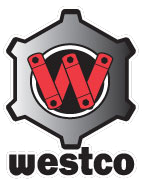Top 10 Ways to Improve Efficiency in Your Production Line
In today’s highly competitive manufacturing landscape, optimizing production line efficiency is crucial for companies looking to maximize productivity and profitability. However, knowing where to start can be challenging when seeking to realize untapped efficiency potential. This article outlines 10 impactful strategies that manufacturers can implement to streamline operations, upgrade technology, reduce waste, and boost speed and quality. From preventative maintenance to inventory management and workflow optimizations, we will explore tangible tips to incrementally or dramatically improve your production line performance. Whether looking to make minor gains or transform processes, this guide provides value-driven insights to reach your manufacturing goals.
- Streamline Processes
Taking a magnifying glass to each step in your workflows could uncover game-changing efficiencies. Are redundant actions eating up time? See if combining certain steps might optimize the process. Could rejiggering the sequence get products from A to B faster? Any manual tasks ripe for automation? Time your processes, find the lags. Assess communications between teams – are handoffs hampered by gaps? Refresh SOPs and instructions to nix outdated or inefficient ways of doing things. An outside perspective may expose improvement opportunities hiding in plain sight.
- Monitor Speed and Errors
Keeping eyes on your processes is mission-critical for dialing in quality and efficiency. Get inline sensors, data tracking – give yourself insider intel to catch bottlenecks. Takt time tracking makes sure you meet targets, keep the customers happy. Vision systems red-flag defects before they spread, saving big on rework. Break it down, dig into each process segment to pinpoint problem points. Crunch the numbers to see where things need rebalancing or SOP refreshers. Shopping for upgrades? Emphasize built-in monitoring that converts data into action. Lean on vendor expertise to select tools that seamlessly fit needs.
- Enhance Material Flow
Smooth-flowing materials are the lifeblood of efficient production. Could conveyors, guides, floor markings steer parts from A to B faster? Prioritize ergonomic, waist-height part transfer. Compact layouts minimize travel between stations. Gravity conveyors reduce energy costs. Watch for collisions and pile-ups. Standardize containers for plug-and-play handling. Visual controls improve material direction. Smoothing logistics cuts waste and revs up processes.
- Implement a Production Control System
A centralized Production Control System serves up an eagle-eye view across manufacturing. Monitor production speed, asset performance, quality, downstream processes – optimize using data insights. Coordinate equipment and processes for seamless synergy. Overall Equipment Effectiveness analytics help refine performance. Building a system? Define must-have functionality like scheduling, dispatching, MES – tailor it to your needs. Engineers can customize a system fitting your processes like a glove.
- Perform Preventative Maintenance
Preventative maintenance is crucial for upholding quality and speed. Scheduled equipment inspections, testing, parts replacement can catch issues before they escalate. Develop checklists for proactive maintenance procedures. Provide training and tools to empower maintenance teams. Enforce schedules to stay on top of servicing needs. Well-tended machines work better and last longer, avoiding costly breakdowns.
- Test for Bottlenecks
Put your line through its paces to uncover constraints. Crank up the speed, stress test maximum capacity – where’s the choke point? Whatever’s holding you back, now it’s exposed. Address workflow kinks, resource lags, equipment limits revealed through testing. Don’t be timid, inch up speed until the tightest bottleneck pops. Use results to inform equipment purchases, process tweaks, layout optimization. Discover constraints only a maxed out system makes known.
- Standardize Procedures
Documenting standard operating procedures creates consistency and quality through shared best practices. Capture what top performers do and spread it across your workforce. Create visual, quick-reference instructions to enable employee success. Standard procedures increase quality while allowing feedback to enhance approaches. Offer thorough training when rolling out new standards and equipment. Set your team up for winning through shared knowledge.
- Balance Work Distribution
Make sure your line’s not overloading some stations at the expense of others. Assess workloads, adjust as needed to spread labor evenly across the chain. Adapt workflows to position personnel for optimal efficiency. Mismatched work volumes create slowdowns and bottlenecks. Strike the right balance so output flows smoothly.
- Refine Inventory Management
Cutting overproduction waste starts with aligning output to demand forecasts. Cull excess stockpiles by sharpening just-in-time inventory tactics. Get an ERP system for real-time visibility. Match production schedules tightly to incoming orders. Trimming excess inventory lightens costs and storage needs. Stop producing for shelves and start producing for customers.
- Upgrade Aging Equipment
Replace worn equipment before downtime crashes the party. Prioritize upgrades that promise boosted speed and efficiency. Calculate long-term savings from increased performance and maintenance avoidance. Evaluate flexibility to adapt to evolving needs. Modern machines often have built-in data capabilities too. While upgrades require capital, the investment can pay itself back over time.
With a strategic eye towards continuous improvement, there are myriad ways to unlock efficiency gains within your production lines. Beginning with targeted assessments to identify gaps, manufacturers can apply these strategies in a systematic fashion to optimize equipment, workflows, quality control, and more. While reaching your full productivity and profitability potential requires investment and dedication, the long-term benefits are far-reaching. Partnering with specialist teams can provide invaluable expertise to implement changes smoothly.
The key is commitment to ongoing enhancement through both technical and cultural shifts. By engaging your workforce, leveraging data, and employing the latest technologies, you can bring your manufacturing processes closer to their full potential, one step at a time
